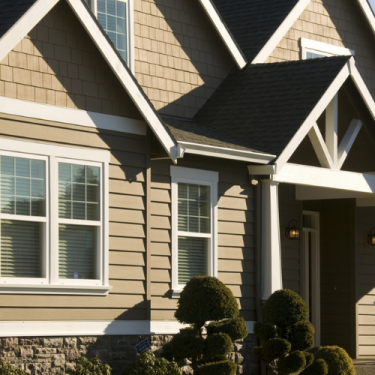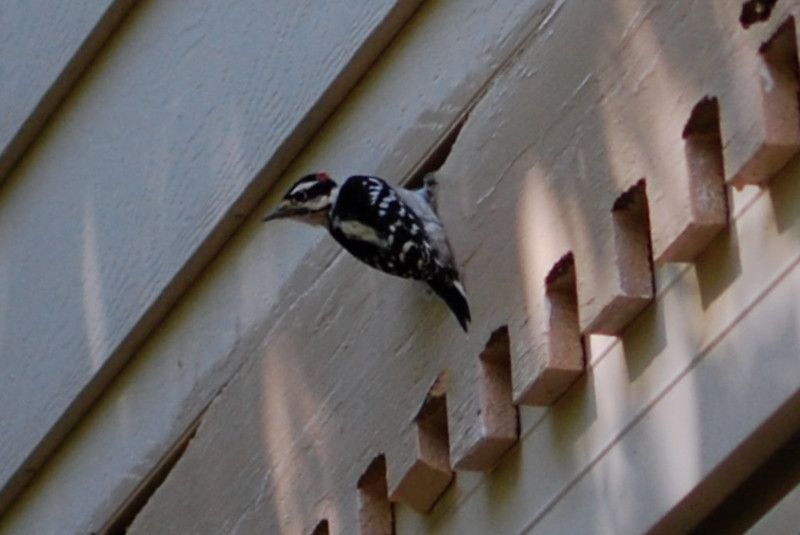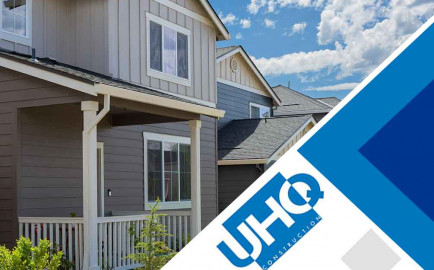Your siding is a vital, long-term investment in safeguarding your home. When faced with siding damage, it can compromise your home’s primary defense against the elements. As an informed Indiana homeowner, it’s essential to detect siding damage early and take prompt action to protect your investment. In this comprehensive guide, we’ll walk you through the most common causes of siding damage, how to identify them, and when to consider hiring a contractor for siding repair or replacement. Let’s delve into the intricacies of siding damage.
Weather and Siding Damage
Indiana experiences all four seasons, which means homeowners must remain vigilant for weather-related siding damage. Windstorms and hail are significant culprits behind siding damage. While some may believe that storm damage is immediately apparent, that’s not always the case. Even if everything appears fine right after a storm, it’s crucial to inspect your home regularly for subtle signs of damage caused by hail and strong winds.

Hail and wind can result in small holes, chips, or cracks in your siding. If you spot this kind of damage, it’s advisable to leave it undisturbed and ask your family members to do the same. Attempting to repair these holes may widen them, allowing drafts, insects, and moisture to infiltrate.
Small dents, holes, and chips can typically be repaired by your contractor. However, larger, more conspicuous holes may necessitate a complete siding replacement.
Moisture-Induced Siding Damage
Despite vinyl siding having a water barrier, it is not entirely waterproof. Rainwater and humidity are primary contributors to moisture-related siding damage, resulting in issues like mold and dry rot.
Mold
Mold tends to thrive on shaded siding or areas with limited sunlight exposure. You can address small mold growth by cleaning it with a solution of vinegar and water applied with a soft-bristle brush. However, if extensive sections of siding are plagued by mold, it’s time to enlist a professional for replacement.
Dry Rot
Wooden siding can fall victim to dry rot when exposed to water from leaking gutters, penetrating dampness, or poor ventilation. Fungus can develop and deteriorate the wood, jeopardizing your home’s structural integrity and foundation. Carefully inspect your siding for mycelium, a cotton wool-like substance or an orange or rust-colored mass. This type of damage is critical and requires immediate attention. A contractor will need to remove the siding, eliminate affected wood, and replace it with new, sound material to protect your home’s foundation.
Wildlife and Siding Damage
Insects and woodpeckers pose a persistent threat to homeowners, causing more than just physical damage. They can inflict severe harm on your siding. By remaining vigilant for signs of moisture or rotting sections on your siding, such as rusty nails, bleed marks, or visibly cracked clapboard, you may be able to identify infestations early and take steps to prevent further damage.
Woodpeckers
Woodpeckers can be a nuisance, leaving holes in your siding that can ruin its appearance and invite repeat visits. Before addressing siding damage, take measures to eliminate what attracted the woodpeckers in the first place. To discourage their return, remove any insects from your outdoor structures, denying woodpeckers a source of food.

Carpenter Ants
Check your property for moist or rotting sections of siding. Carpenter ants often create nests in damp exterior siding. If you observe small holes in your siding alongside ant trails or sawdust piles, you may have located the nest. Fill the nest entrance with an insecticide containing carbaryl or pyrethroids to eradicate the nest, including the carpenter ant queen, who lays eggs contributing to the infestation. Alternatively, set bait along visible ant trails, which the ants will transport back to their nest.
Carpenter Bees
Carpenter bees are known for burrowing into moist or rotting siding to lay their eggs. Keep an eye out for two-inch-deep holes on the underside of soffits, siding, or the eaves of your wooden house. Consider using a carpenter bee trap or filling visible holes with residual dust insecticide to terminate the infestation.
Termites
Termites are destructive pests that can wreak havoc on your siding, foundation, and your entire home’s long-term integrity. Examine your woodwork and foundation for leftover wings, hollow spots, or termite droppings, resembling small one-millimeter-long pellets that may look like ground black pepper. If you suspect a termite infestation, contact a professional exterminator immediately. They possess the expertise and tools necessary to address the infestation with professional-grade bait, insecticides, and traps.
Addressing Siding Damage from Wildlife
Upon identifying or taking action against insect infestations and nuisance animals like woodpeckers, you can choose to fill the holes yourself or consult a professional for proper siding damage treatment. For small sections of siding damage or a few holes, putty is ideal for repairing holes, while shingles should be filled with wood putty. In cases of extensive siding damage or when foundation compromise is suspected due to moisture or rot, it’s advisable to engage a professional for a thorough evaluation and potential replacement.
Contact Unrushed Honest Quality (UHQ), Your Siding Damage Professionals
If you suspect your home has incurred siding damage, do not delay. Contact us, and we’ll assist in assessing the extent of the damage and recommend the best approach for repair or replacement. Learn more about our siding services and products on our website, and reach out to us using the contact information provided below or by calling (317) 943-8406. We are dedicated to helping you safeguard your home for the long term.




